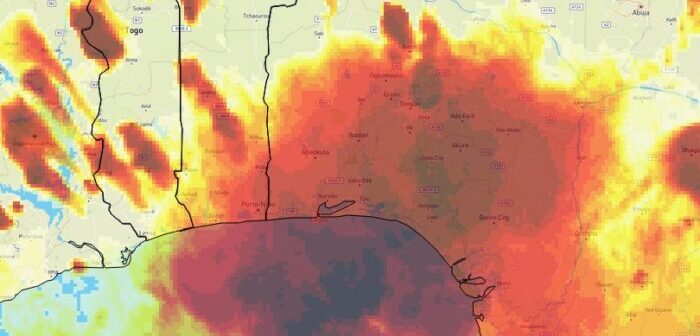The UK Centre for Ecology & Hydrology (UKCEH) has launched a new online portal to help provide earlier and more reliable storm warnings for communities in West Africa.
Large storms in the Sahel region, which can grow to cover more than 100km, have become more extreme since the 1980s due to the changing climate, with more intense rainfall. Severe flooding during the monsoon from June to September often results in human and livestock deaths, as well as damage to property and infrastructure.
Thanks to a recent breakthrough by UKCEH scientists, forecasting agencies in Africa can now perform nowcasts for six hours ahead and with a higher degree of accuracy. According to the new research, drier soils can increase the intensity of storms when they are on the move, affecting where they travel and the amount of rainfall they produce.
To assist forecasters, these novel nowcasting predictions and related satellite observations for West Africa have been made available via the new portal, which has been funded by the Natural Environment Research Council (NERC).
National forecasters can interpret the data and make localized forecasts, sending out warnings to communities in areas expected to be impacted by extreme weather. Last year, as part of a trial of the nowcasting tool, forecasters in Senegal used it to issue a severe weather warning to the public via text message.
Dr Steven Cole, group leader/senior hydrological modeller, UKCEH, said, “The portal is a great example of how new scientific understanding can be translated into useable real-time tools by working with forecasters. Importantly, this will support communities in West Africa to better manage flood risk from intense rainfall.”
A recent study found that using data about land surface temperatures improves predictions about the path and strength of an approaching mesoscale convective system (MCS) up to 12 hours ahead. These ‘megastorms’ can be bigger than the size of England and unleash over 100mm of rainfall in just an hour.
Professor Chris Taylor, meteorologist, UKCEH, said, “We found a surprising level of predictability of storms from land surface temperatures when testing our methodology on historical data, and West African forecasters are finding our approach very useful for their work.
“We would expect mesoscale convective systems elsewhere in the world to also be influenced by drier soils. Therefore, our methodology could potentially be used to improve storm and flood warning systems in tropical regions such as South Asia and Australia, as well as parts of USA and South America.”
The new nowcasting portal enables forecasters to observe storm clouds in near real time via satellite and compare them with historical storm behavior, plus view data on current land surface conditions. The online tool then uses this data, updated every 15 minutes, to calculate the probability of a mesoscale convective system reaching different areas of the Sahel between the current time and six hours ahead.
As part of a collaboration with ANACIM, the national meteorological service in Senegal, UKCEH has also developed short-term forecasts of potential flood impacts and risk in Dakar which are available on the portal. It also hopes to work with other forecasting services to provide this service for other areas.



